
FIELD UPDATE WITH FARMER BRENTON: THE GREAT PIGWEED BATTLE
08/28/20 — Ada Broussard
Hello JBG newsletter readers! Ada here. I’ve worked at JBG for around 7 years in a variety of roles, most recently working on our newsletter. I hope you enjoy reading the farm blog each week! It’s one of the things that first attracted me to JBG so many years ago. It’s been a long while since I’ve set my boots on the soil at our Garfield, Texas farm, and this past week I made the trek east to catch-up and mask-up with Farmer Brenton.
These days, Brenton spends the mornings (and often the afternoons) on the tractor. The farm is busy preparing and planting for the fall season, and it’s an all-hands on deck sorta situation. Driving a tractor, especially some of or more antique models, is a very skilled job, and so having Brenton aboard helps ensure we stay on our planting schedule. I planned to meet Brenton at lunchtime (an understood 12 sharp), and when I arrived I found him under our butterfly pavilion in a metal folding chair, talking to Jack (our planting manager) who was in a coordinating metal chair about 10 feet away, clipboard, radio, and cell phone in hand.
![]() Brenton coordinating with Angel and Luke. Photo by Scott David Gordon.
Brenton coordinating with Angel and Luke. Photo by Scott David Gordon.
I have missed the incessant buzz of the farm and was so content to sit in my own metal chair, and for about 5 minutes, simply observe the whirling conversations, tasks, radio calls, and questions Brenton and Jack were fielding. This farmy hum of energy is palpable most days at JBG and it doesn’t really have an off season. Brenton was apologetic that he wasn’t quite ready to meet with me, but I knew that the buzz of his cell phone and exchanges with managers all needed to be addressed - they fuel the momentum that would keep the day, and week, and entire planting season rolling. At the time, Brenton and Jack were discussing the missing top link that was needed to get the tine weeder hooked up to tractor number 5. I learned that the top link was the upper portion of the three point hitch used to attach an implement and help it move backwards and forwards. With so many implements and tools at the farm, and so many different people using this equipment, we have some pretty established systems on what goes where. Despite all this, a top link can still go missing. (Spoiler: Temo knew where the link was.)
After chatting with Brenton and Jack for a while and meeting a few new faces, it was clear that lunch hour was ending. And so after masking up, I jumped in the backseat of Brenton’s truck so he could show me what was on his mind: several weeds and the thoughtfully orchestrated plan in place to get them under control. It’s been months since I’ve ridden in Brenton’s truck, but I was glad to see that not much has changed. Irrigation hoses and couplers, wrenches, mason jars stained with coffee, and who knows what else were pushed over so I could squeeze in the back seat.
![]() A farmer, his truck, and his coffee. Photo by Scott David Gordon.
A farmer, his truck, and his coffee. Photo by Scott David Gordon.
For the past year or two, a few types of weeds from the amaranth genus, including pigweed, have taken up shop in the JBG fields. These weeds can be voracious, and to be honest, we’ve let them get a little too comfortable. Over the past couple of years, there have been several moments in the season where we simply did not have the labor nor time to weed-out these plants like we would have wanted, and left untended, these crops grew, thrived, and dropped their seed... only compounding the problem and pressure.
![]() Pigweed at the farm. Photo by Scott David Gordon.
Pigweed at the farm. Photo by Scott David Gordon.
On a farm our size, weeds are particularly pesky: they can inhibit the growth of crops by competing for water, space, and nutrients. They can reduce the yield and quality of our crops and dramatically increase labor costs simply by existing - their presence among valuable row crops usually slows down the harvesting and sorting processes. To boot, big swaths of weeds on the farm can serve as a wonderful wintering ground for disease and harmful pests who would love nothing more than to hunkerdown amid the pigweed. In the business of growing vegetables on 184 acres, weeds like this are worrisome.
Heading into this fall season, Brenton and the Garfield crew knew we had to get the pigweed under control. As Temo put it - “We don’t really have a choice.” And so, Brenton and I drove his navy Nissan across the creek to the far side of the farm where he could show me how we were tackling the weeds using the tried and true technique known as stale seed bedding.
A stale seed bed is simply a method of weed control in which the bed and the soil are prepped weeks before the crop’s seed is planted. This prepped bed is watered, either by rain, sprinklers, or drip irrigation, allowing all of the weed seeds that are stealthy hiding in the top 2-3 inches of the seed bank to germinate and show themselves. After the weeds poke their heads out, they’re eliminated either by flame weeding or mechanical cultivation with our tine weeder- essentially a huge rake. This entire process can take about 3-5 weeks, but the end result is a prepped bed that is relatively weed-free, ready to absorb our direct-seeded fall crops…. Or our “cool-season direct” crops, for short. This includes vegetables like beets, carrots, turnips, chard, spinach, and radishes… aka everything you’d ever need for a massive harvest salad.
![]() Don't mock us for the weeds, okay? Photo by Scott David Gordon.
Don't mock us for the weeds, okay? Photo by Scott David Gordon.
Though we’ve occasionally used this method of weed control on the farm before, we’ve never done it on such a scale. Stale seed bedding acres upon acres of our farm means hours and hours (and hours) on the tractor, passing over one bed many additional times to list, shape, and cultivate the row all before the actual crop is ever planted. Stale seed bedding necessitates an impressive degree of foresight. In order to make sure our direct seeded crops get in the ground at the earliest possible moment (and keep the CSA box interesting!), we have to germinate the weed seeds about 4 weeks before that, and turn over the previous row or cover crop about a week before that, and schedule labor and order drip tape and prepare tools weeks before that, and so on and so forth.. Multiply that thought-processes by the whole farm, across all seasons, but most notably right now. In certain areas where the weeds are particularly rampant, we may even do the entire stale seed bed process twice. I’ve worked at JBG for many years, and I’m particularly proud of the farm this season. I can honestly say that we’ve reached a moment in our operational history in which we’re farming more and more proactively and less and less reactively. Way to go, team!
As we drove around the farm, Brenton showed me beds in various stages of the stale seedbed process. One bed was covered in a thin green blanket of freshly germinated sprouts… weeds, soon to be bid adieu. Another area had uniformly sculpted rows of rich looking soil, with only a few large weeds scattered about, blowing in the wind like easy targets. These beds had already been stale seed bedded, and the lingering couple of weeds were simply missed, but they were so few and far between that they could be easily removed by hand. These beds were practically weed-free, and were ready to be sown with orange carrots late successions of squash. I saw John and Ned laying drip tape in yet another set of beds that had just been turned over and shaped, ready to welcome the weeds weeks before beds of rainbow chard are sown.
![]() Okra flowers, pointing towards the sun. Photo by Scott David Gordon.
Okra flowers, pointing towards the sun. Photo by Scott David Gordon.
After thoroughly assessing all the beds in progress, Brenton and I drove around to look at some of the crops currently thriving in the ground. There were several rows of pristine baby bok choy, making their seasonal debut notably early. The okra plants are now over 5 feet tall, each topped with pale yellow flowers, pointed at the sun and standing high against the wide blue sky. We also saw rows of red radishes, and white Japanese turnips almost ready for snacking. A few beds over, Vicente and his team were harvesting watermelons. By this point of our visit, I could tell Brenton was itching to get back on the tractor, and so I took the cue and joined Vicente and his team for a while because I missed Vicente and I love watermelon. Later, I followed my nose to the wafting smell of basil and found Temo, who was disguised in a large hat, mask, and sunglasses, busy with the ambrosial tasks of removing basil plants which had gotten tangled in the metal blades of one of our cultivators. Later after that, I had a watermelon and basil salad, and thought of all the weed-free beds that will soon be brimming with cool season crops. Thanks Brenton, Jack, Adam, Giana, Temo, and Vicente for the visit. Till next time!
![]() Personal watermelon, brought to you by weed-free beds. Harvested by Israel, photographed by Scott.
Personal watermelon, brought to you by weed-free beds. Harvested by Israel, photographed by Scott.
These days, Brenton spends the mornings (and often the afternoons) on the tractor. The farm is busy preparing and planting for the fall season, and it’s an all-hands on deck sorta situation. Driving a tractor, especially some of or more antique models, is a very skilled job, and so having Brenton aboard helps ensure we stay on our planting schedule. I planned to meet Brenton at lunchtime (an understood 12 sharp), and when I arrived I found him under our butterfly pavilion in a metal folding chair, talking to Jack (our planting manager) who was in a coordinating metal chair about 10 feet away, clipboard, radio, and cell phone in hand.
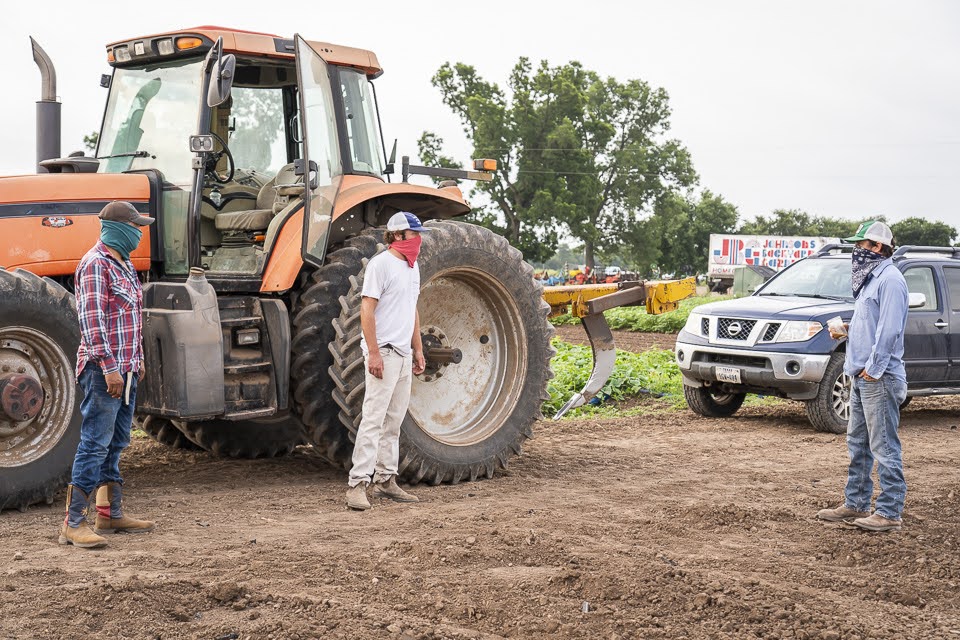 Brenton coordinating with Angel and Luke. Photo by Scott David Gordon.
Brenton coordinating with Angel and Luke. Photo by Scott David Gordon.
I have missed the incessant buzz of the farm and was so content to sit in my own metal chair, and for about 5 minutes, simply observe the whirling conversations, tasks, radio calls, and questions Brenton and Jack were fielding. This farmy hum of energy is palpable most days at JBG and it doesn’t really have an off season. Brenton was apologetic that he wasn’t quite ready to meet with me, but I knew that the buzz of his cell phone and exchanges with managers all needed to be addressed - they fuel the momentum that would keep the day, and week, and entire planting season rolling. At the time, Brenton and Jack were discussing the missing top link that was needed to get the tine weeder hooked up to tractor number 5. I learned that the top link was the upper portion of the three point hitch used to attach an implement and help it move backwards and forwards. With so many implements and tools at the farm, and so many different people using this equipment, we have some pretty established systems on what goes where. Despite all this, a top link can still go missing. (Spoiler: Temo knew where the link was.)
After chatting with Brenton and Jack for a while and meeting a few new faces, it was clear that lunch hour was ending. And so after masking up, I jumped in the backseat of Brenton’s truck so he could show me what was on his mind: several weeds and the thoughtfully orchestrated plan in place to get them under control. It’s been months since I’ve ridden in Brenton’s truck, but I was glad to see that not much has changed. Irrigation hoses and couplers, wrenches, mason jars stained with coffee, and who knows what else were pushed over so I could squeeze in the back seat.
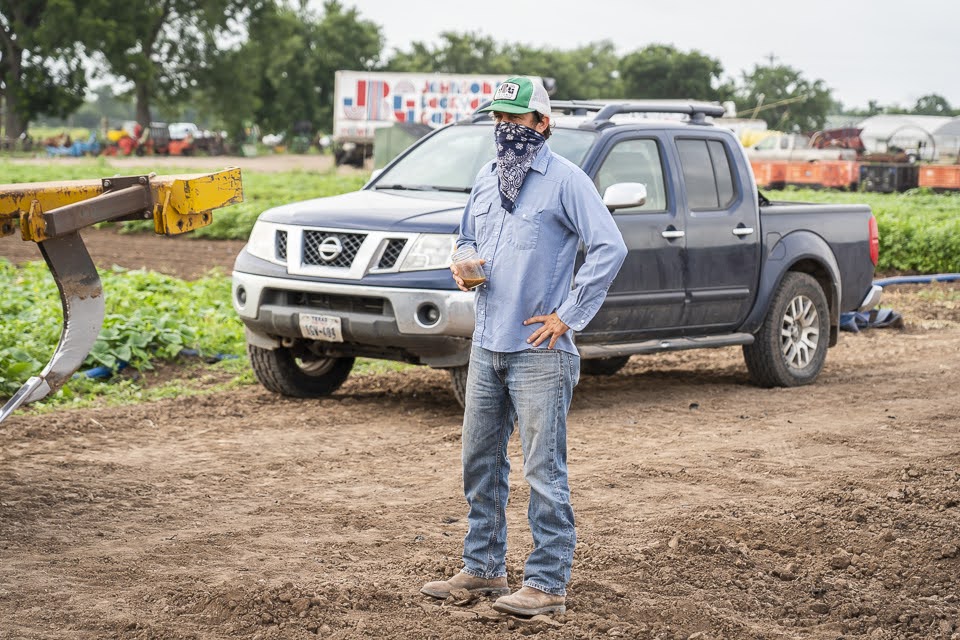 A farmer, his truck, and his coffee. Photo by Scott David Gordon.
A farmer, his truck, and his coffee. Photo by Scott David Gordon.
For the past year or two, a few types of weeds from the amaranth genus, including pigweed, have taken up shop in the JBG fields. These weeds can be voracious, and to be honest, we’ve let them get a little too comfortable. Over the past couple of years, there have been several moments in the season where we simply did not have the labor nor time to weed-out these plants like we would have wanted, and left untended, these crops grew, thrived, and dropped their seed... only compounding the problem and pressure.
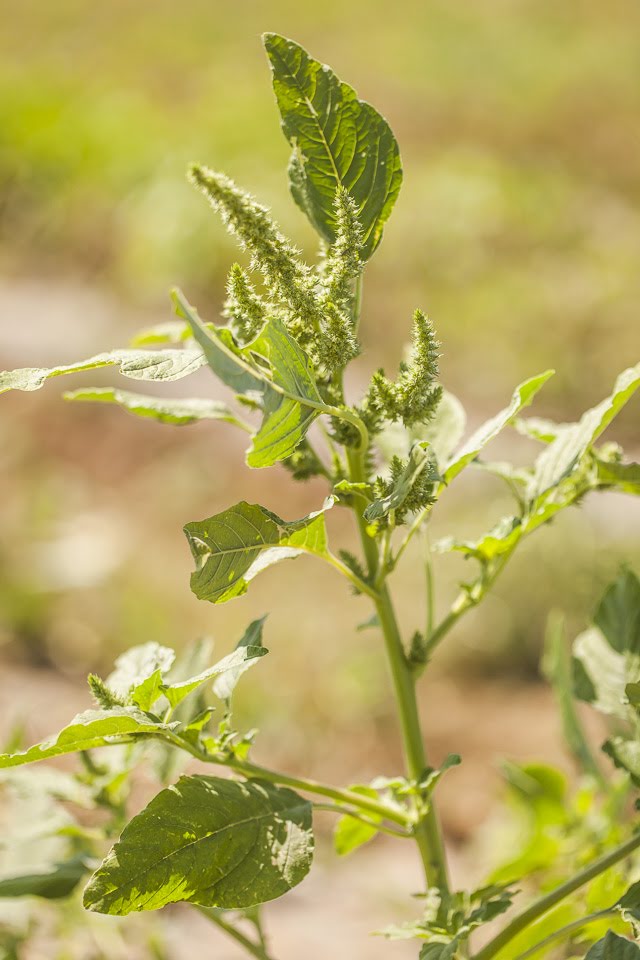 Pigweed at the farm. Photo by Scott David Gordon.
Pigweed at the farm. Photo by Scott David Gordon.
On a farm our size, weeds are particularly pesky: they can inhibit the growth of crops by competing for water, space, and nutrients. They can reduce the yield and quality of our crops and dramatically increase labor costs simply by existing - their presence among valuable row crops usually slows down the harvesting and sorting processes. To boot, big swaths of weeds on the farm can serve as a wonderful wintering ground for disease and harmful pests who would love nothing more than to hunkerdown amid the pigweed. In the business of growing vegetables on 184 acres, weeds like this are worrisome.
Heading into this fall season, Brenton and the Garfield crew knew we had to get the pigweed under control. As Temo put it - “We don’t really have a choice.” And so, Brenton and I drove his navy Nissan across the creek to the far side of the farm where he could show me how we were tackling the weeds using the tried and true technique known as stale seed bedding.
A stale seed bed is simply a method of weed control in which the bed and the soil are prepped weeks before the crop’s seed is planted. This prepped bed is watered, either by rain, sprinklers, or drip irrigation, allowing all of the weed seeds that are stealthy hiding in the top 2-3 inches of the seed bank to germinate and show themselves. After the weeds poke their heads out, they’re eliminated either by flame weeding or mechanical cultivation with our tine weeder- essentially a huge rake. This entire process can take about 3-5 weeks, but the end result is a prepped bed that is relatively weed-free, ready to absorb our direct-seeded fall crops…. Or our “cool-season direct” crops, for short. This includes vegetables like beets, carrots, turnips, chard, spinach, and radishes… aka everything you’d ever need for a massive harvest salad.
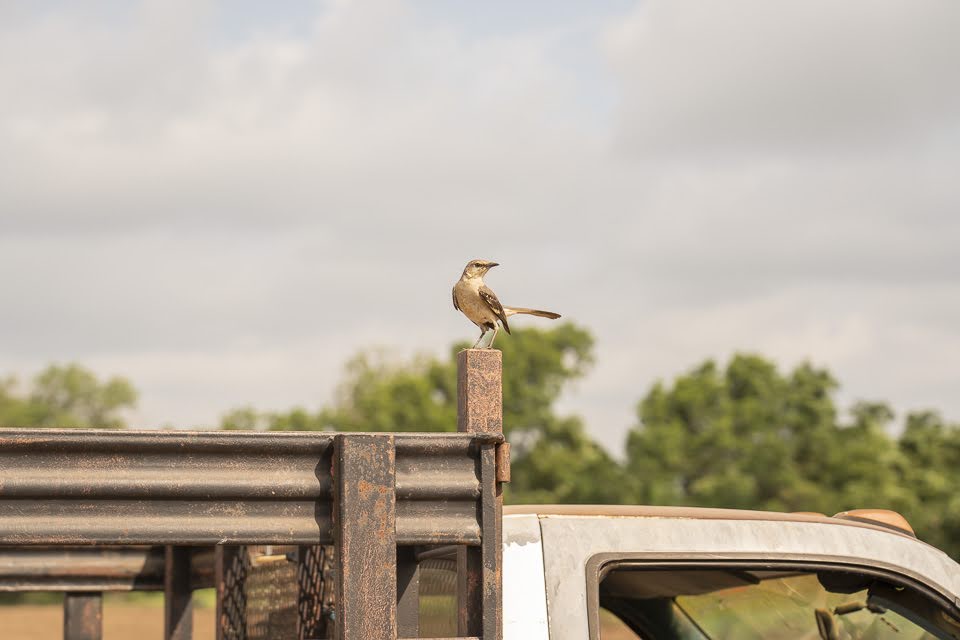 Don't mock us for the weeds, okay? Photo by Scott David Gordon.
Don't mock us for the weeds, okay? Photo by Scott David Gordon.
Though we’ve occasionally used this method of weed control on the farm before, we’ve never done it on such a scale. Stale seed bedding acres upon acres of our farm means hours and hours (and hours) on the tractor, passing over one bed many additional times to list, shape, and cultivate the row all before the actual crop is ever planted. Stale seed bedding necessitates an impressive degree of foresight. In order to make sure our direct seeded crops get in the ground at the earliest possible moment (and keep the CSA box interesting!), we have to germinate the weed seeds about 4 weeks before that, and turn over the previous row or cover crop about a week before that, and schedule labor and order drip tape and prepare tools weeks before that, and so on and so forth.. Multiply that thought-processes by the whole farm, across all seasons, but most notably right now. In certain areas where the weeds are particularly rampant, we may even do the entire stale seed bed process twice. I’ve worked at JBG for many years, and I’m particularly proud of the farm this season. I can honestly say that we’ve reached a moment in our operational history in which we’re farming more and more proactively and less and less reactively. Way to go, team!
As we drove around the farm, Brenton showed me beds in various stages of the stale seedbed process. One bed was covered in a thin green blanket of freshly germinated sprouts… weeds, soon to be bid adieu. Another area had uniformly sculpted rows of rich looking soil, with only a few large weeds scattered about, blowing in the wind like easy targets. These beds had already been stale seed bedded, and the lingering couple of weeds were simply missed, but they were so few and far between that they could be easily removed by hand. These beds were practically weed-free, and were ready to be sown with orange carrots late successions of squash. I saw John and Ned laying drip tape in yet another set of beds that had just been turned over and shaped, ready to welcome the weeds weeks before beds of rainbow chard are sown.
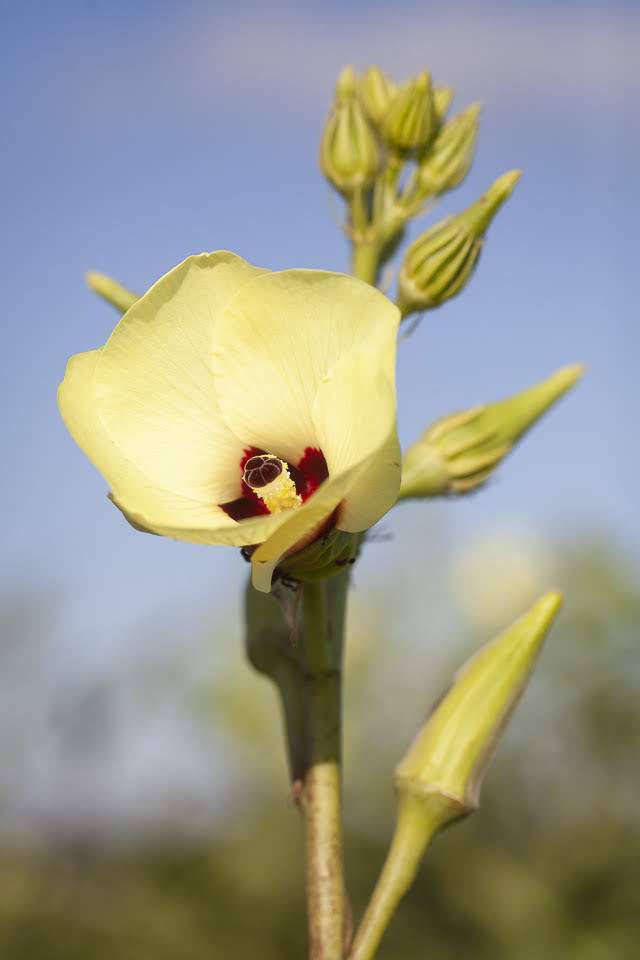 Okra flowers, pointing towards the sun. Photo by Scott David Gordon.
Okra flowers, pointing towards the sun. Photo by Scott David Gordon.
After thoroughly assessing all the beds in progress, Brenton and I drove around to look at some of the crops currently thriving in the ground. There were several rows of pristine baby bok choy, making their seasonal debut notably early. The okra plants are now over 5 feet tall, each topped with pale yellow flowers, pointed at the sun and standing high against the wide blue sky. We also saw rows of red radishes, and white Japanese turnips almost ready for snacking. A few beds over, Vicente and his team were harvesting watermelons. By this point of our visit, I could tell Brenton was itching to get back on the tractor, and so I took the cue and joined Vicente and his team for a while because I missed Vicente and I love watermelon. Later, I followed my nose to the wafting smell of basil and found Temo, who was disguised in a large hat, mask, and sunglasses, busy with the ambrosial tasks of removing basil plants which had gotten tangled in the metal blades of one of our cultivators. Later after that, I had a watermelon and basil salad, and thought of all the weed-free beds that will soon be brimming with cool season crops. Thanks Brenton, Jack, Adam, Giana, Temo, and Vicente for the visit. Till next time!
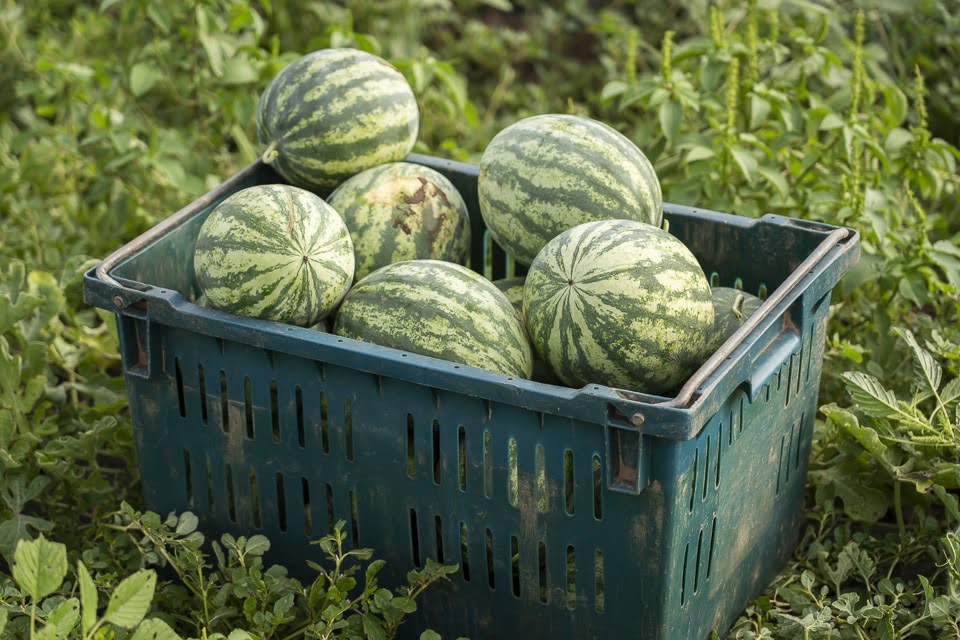 Personal watermelon, brought to you by weed-free beds. Harvested by Israel, photographed by Scott.
Personal watermelon, brought to you by weed-free beds. Harvested by Israel, photographed by Scott.






 0 ITEMS IN CART
0 ITEMS IN CART 

